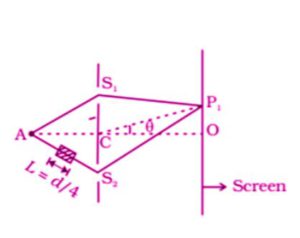
According to the question,

From central maxima, ![]()
![]()
On the positive side,
![]()
On the negative side,
![]()
On the positive side, the first main maximum is at a distance, which is above point. ![]()
![]()
On the negative side, the first main minima is at a distance, which is below point. ![]()
![]()
